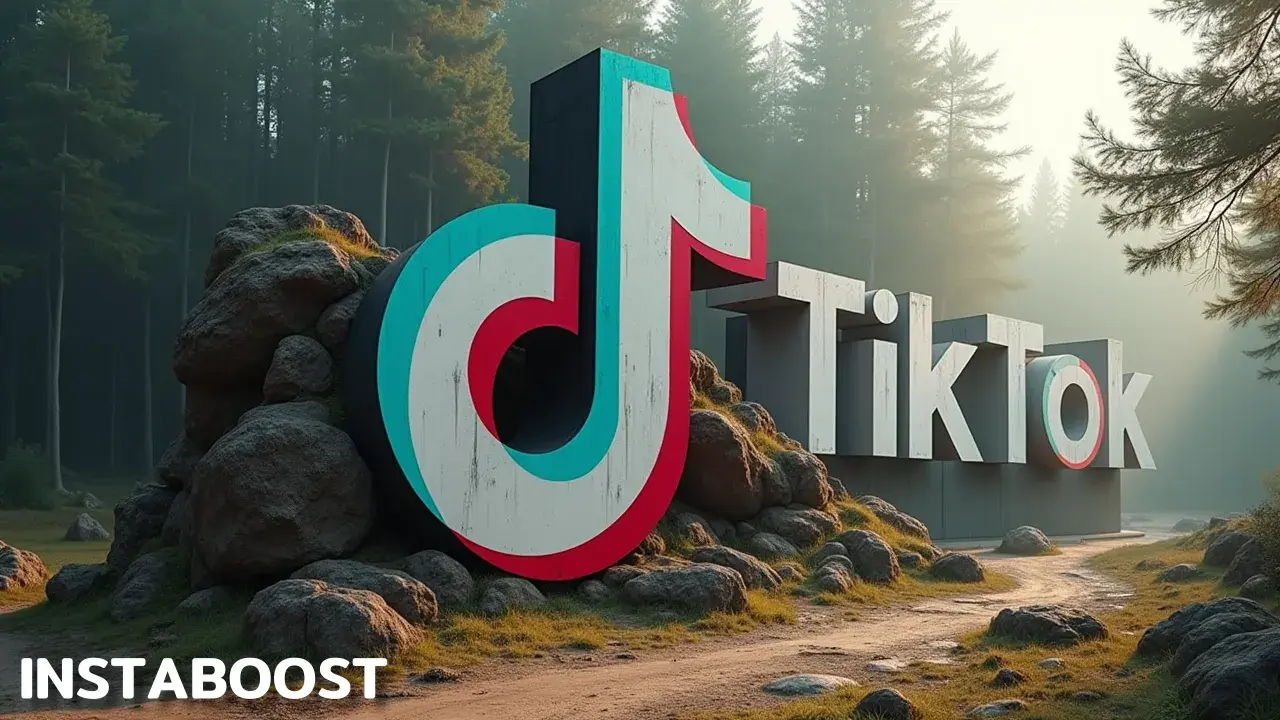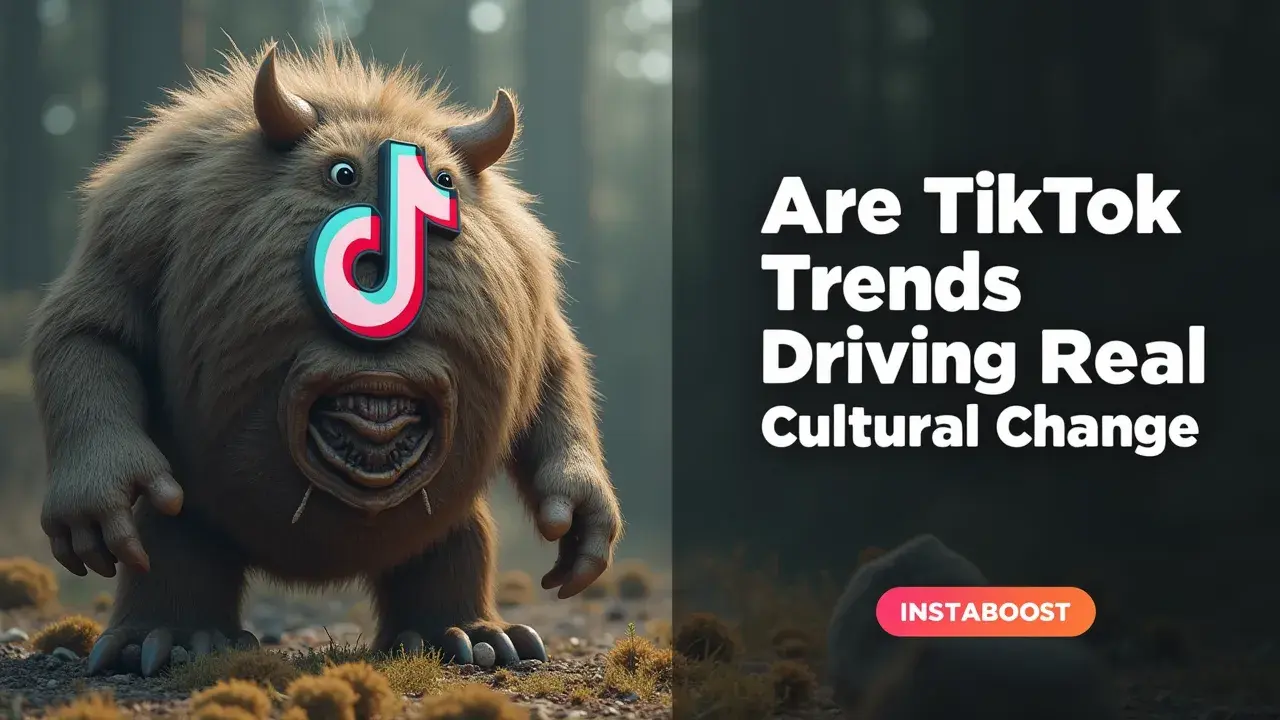Are TikTok Trends Driving Real Cultural Change?
TikTok trends can influence culture when they move beyond entertainment into sustained shifts in norms, markets, and political conversation. Their impact depends on reach, repetition, and translation into offline behavior, as well as alignment with existing sentiments. Many trends fade quickly, but those that mobilize communities or alter purchasing patterns signal deeper change. Focusing on durability and real-world uptake is the smart path to spotting what truly sticks.
Trend or Transformation? Setting the Bar for Cultural Change
I think about it as a TikTok compression effect: trends that used to take a whole season now fly by in a few days, and the feed can make a tiny aesthetic look like a full movement. But “viral” (and the scramble to increase TikTok visibility) isn’t the same as socially real.
Asking whether TikTok trends change culture is really asking what survives the For You page – what shows up in rules, budgets, habits, and everyday language. Our standard should be institutional: does a fad shift school policies or workplace norms, push brands to rework supply chains, or shape public health guidance? Does it move money, rewrite curricula, or change how people are governed? The TV era had the Macarena; Vine trained us on six-second timing that changed how jokes landed but rarely touched institutions.
TikTok’s scale and ranking system speed up discovery and coordination, but speed mostly produces churn – unless it gets baked into how things run. That’s the line we’ll use to guide this series. We’ll look at dances, de-influencing, and micro-aesthetics not for view or share counts but for real uptake: gym classes that formalize new routines, retailers that redesign sourcing, platforms that update moderation, policymakers who cite creator-led research.
We’ll also watch for negative evidence – trends that dominate talk yet leave no mark on policy, purchasing, or practice. Cultural change isn’t about how many people join in; it’s about whether an idea holds up under friction. If a trend survives when incentives shift, attention moves on, and gatekeepers push back, that’s change. If it fades as soon as the feed cools, it’s choreography, not culture. Our job is to separate spectacle from structure and keep an eye on what sticks and increase TikTok visibility

Receipts Over Reach
I’ll take a hard insight over a flashy headline any day. My credibility test is straightforward: show me evidence I can verify. If a TikTok trend is actually moving culture, I look for four things: budgets shift, rules get rewritten, routines change, or the language settles into something people use without thinking. On TikTok, virality is a burst of visibility; culture shows up in what endures.
So I watch for four signals: institutional uptake (syllabi, procurement plans, product roadmaps start naming it), behavioral retention (people keep doing it off‑platform for 90+ days), cross‑demographic diffusion (beyond Gen Z, into workplaces and older cohorts), and a policy or infrastructure shift (HR, school districts, regulators codify it). You can check the public traces – job postings, budget memos, curriculum PDFs, Google Trends (seasonally adjusted), shopping‑basket data, even meeting notes. By that yardstick, dances and micro‑aesthetics mostly stay aesthetic, while some patterns leave budget‑and‑rule footprints: creator‑led commerce lines in marketing budgets, “dupe” endcaps at retailers, refreshed endorsement guidelines, and customer‑support scripts tuned to TikTok‑shaped expectations of speed.
Meanwhile, “quiet quitting” looked huge on the For You page but didn’t leave much behind: few HR policies changed, and scheduling norms barely moved. This isn’t cynicism; it’s how I keep myself honest – borrow the diffusion‑of‑innovations lens and ask whether the S‑curve left the app and hardened into norms; plenty of people chase ways to increase tiktok followers, but if the trail doesn’t show budgets and rules shifting, we’re watching content speed up, not culture change. That’s the bar I keep returning to.
The Trace Test for Real Change
Because TikTok moves fast, focus on what sticks inside systems, not how it looks in the feed. Treat every spike – even the rush to grow tiktok likes – as a test and run a simple four-part Trace Test: Budget, Rules, Routine, Language. In the first two weeks, look for real shifts in spend or placement – purchase orders, media plans, shelf space. By day 30, check whether policies or community guidelines were edited. By day 45, see if calendars, SKUs, lesson plans, or team checklists changed. By day 60, listen for the phrase to show up on its own – in captions, searches, meeting chatter – without people pointing back to a trend.
Use what organizations already generate to instrument this: procurement logs, HR memos, restock cadence, meeting notes, Google Trends, captions, transcripts. Cross-check off-platform as well: search data, Slack threads, school newsletters, supermarket endcaps. And note unprompted actions – things people do without rewards or creator nudges. Work it in two lanes. Speed lane: try the behavior quickly in your own world – one pilot, a small budget, a single team ritual. Proof lane: confirm it with three independent sources before you scale.
Add a counterfactual: compare a matched group that never saw the clip, or watch whether the behavior holds once the clip stops circulating. If it keeps going despite time, cost, or risk, you’re looking at cultural change, not a temporary ripple. That’s how you sort the volume of TikTok activity from the few signals that actually shift rules, budgets, habits, and language. It’s practical, quick, and steadies the team.
Stop Letting Spikes Pass for Proof
It can look fine – the algorithm, the numbers – but it isn’t. The For You feed rewards novelty, and novelty isn’t evidence. So when a TikTok trend surges, treat it first as distribution, not as proof of a shift.
A lot of what reads as momentum is built on scaffolding: paid seeding, creator swaps, repost loops, engagement pods, in‑app boosts, and yes – people still buy likes to get seen on tiktok. Analytics can tell you what spiked; they don’t tell you what changed the system. That’s what the Trace Test is for. In the first two weeks, push back on the hype by asking yourself: Did budgets move (reallocations, POs, shelf space)? Did rules change (policy, brand guidelines, moderation standards)? Did routines shift (staff workflows, classroom practices, production calendars)?
Did the language show up in untagged, off‑platform speech? “De‑influencing” looked huge, but most procurement and media plans barely moved; return policies didn’t change, and the phrase faded once the growth hacks stopped. Compare that to “quiet luxury,” which, while less explosive, redirected merchandising budgets and dress codes, and slid into everyday vocabulary without a hashtag. As a rule of thumb: if a trend’s footprint disappears at the platform edge, it’s a feed‑level moment; if the footprint shows up inside institutions, you may have the start of cultural change. Until you can point to receipts, rules, routines, and language, assume the algorithm is doing the inflating – and your job is to look for the thing that lets the air out.
Decide: Drift with Spikes or Build with Traces
This ends when you let go – or when you lean in. If you want a TikTok trend to lead to real change, don’t treat a spike like fate; run it like operations, even if you tried to support growth with TikTok shares. Whenever something takes off, give it a Trace Test within two weeks. Check for movement in four places: Budget, Rules, Routine, and Language. Can you point to a purchase order or a new budget line? A policy edit or a checkbox in a form?
A recurring slot on a calendar or a step added to a workflow? A phrase that starts showing up in briefs, decks, or training? If yes, you have traction. If not, you have reach, not evidence – which is why a spike can’t be your proof. Use your social analytics to show how far it traveled.
Then pair that with institutional receipts: contracts, workflows, syllabi, store plans. The path is simple: trend → pilot → policy. Approve small pilots tied to outcomes you can invoice or schedule. Only lift up what clears the pilot and becomes a rule other people have to follow. You’ve seen this in healthy Facebook Groups. People post without a nudge because admins set clear norms, keep the space safe, and build small habits that make posting the easiest thing to do.
Do the same here. If a trend can’t be budgeted, routinized, or named in your operating language, let it go. If it can, lean in and scale. TikTok moves fast; institutions keep the record. Match the speed with a firm filter so a spike turns into something steady – a budget line, a policy note, a meeting on the calendar – after the For You page moves on.
Start With the Clock, Not the Clout
On TikTok, culture runs fast. A week of memes can feel like a TV season, and speed can be mistaken for scale. That’s why a spike can look like movement. The For You feed rewards novelty, not staying power, so treat a surge as distribution, not proof of durable change.
The better question isn’t “Did it go viral?” but “Does it leave traces?” Traces are repeated behaviors that show up across contexts – habits, phrases people use, purchases that repeat, policies updated – and they keep going even when the algorithm looks away. Think about TV-era fads that came and went because no school, workplace, or retailer changed anything, or how Vine’s clever bits rarely became norms. Then look at dances, de‑influencing, and micro‑aesthetics on TikTok and ask where they’ve been absorbed: a school adjusting a dress code or an assignment, a brand altering packaging or shelf space, a department writing a policy note. You see the same in Facebook Groups: when members post unprompted, it points to safety, clear norms, and design that supports participation without constant nudges.
That’s culture taking root, not content churn. Use social analytics as a starting point, not the finish line: impressions measure exposure, while traces measure adoption. The TikTok engagement trio may explain a rush of activity on a post, but it won’t tell you whether anything changed in a classroom, budget, or rulebook.
We’ll separate spikes from traces, show how to run a simple “Trace Test” within two weeks of a pop, and explain how to operationalize a trend you want to keep – so you don’t drift with the spike; you build with the evidence. The aim isn’t to dismiss TikTok trends; it’s to learn which ones travel off‑platform into classrooms, budgets, and rules, and which ones drop away once the feed moves on.















